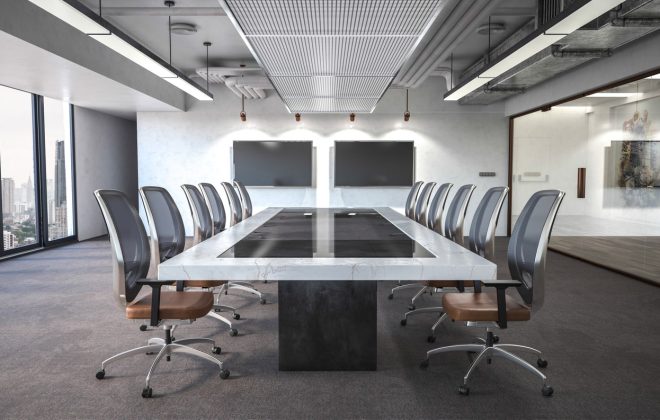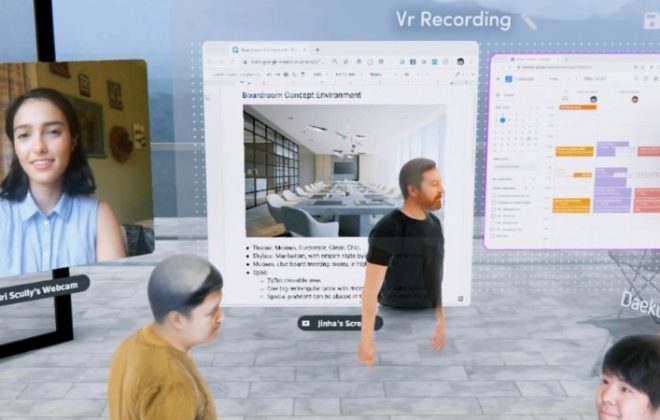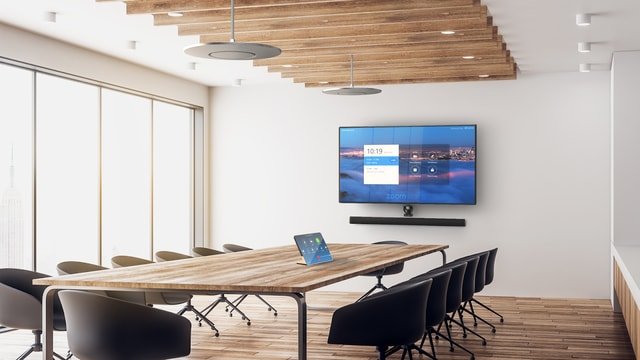Deploying Zoom Rooms in 2023
The talk about RTO (Return To Office) is now a reality. Many businesses have opted to minimize their real estate footprint around the globe and are focused on deploying highly functional conferencing technology in their go-forward offices and enabling productive collaboration. Macronet Services specializes in helping our clients source global collaboration technology and has an industry leading AV and collaboration consulting practice. The following article provides some useful insight into the deployment of Zoom Rooms.
What hardware do you need for a Zoom Room?
Zoom Rooms is a software solution that enables companies to create virtual meeting rooms for remote teams. To set up a Zoom Room, you will need the following hardware:
A Computer: A computer is the central component of a Zoom Room, and it is responsible for running the Zoom Rooms software. You can use a Windows or Mac computer for this purpose.
- A Camera: A camera is necessary for video conferencing, and it should be capable of delivering high-quality video and audio. Zoom Rooms supports a wide range of cameras from leading manufacturers, including Logitech and Cisco.
- A Microphone: A microphone is necessary for audio conferencing, and it should be capable of delivering clear audio. Zoom Rooms supports a wide range of microphones from leading manufacturers, including Logitech and Shure.
- A Display: A display is necessary for presenting and sharing content during a Zoom Room meeting. Zoom Rooms supports a wide range of displays, including large-screen displays and interactive whiteboards.
- A Controller: A controller is necessary for controlling the Zoom Rooms software, and it should be easy to use and intuitive. Zoom Rooms offers a variety of controllers, including the Zoom Room Controller and the Zoom Room iPad Controller.
In addition to these hardware components, you may also need additional accessories, such as cables, mounts, and adapters, depending on the specific configuration of your Zoom Room. Don’t forget, however, to carefully consider acoustic paneling to ensure that your investment in AV technology reaches its full potential.
Acoustic Paneling
Acoustic paneling is a type of sound-absorbing material that can be used in Zoom Rooms to improve the acoustic quality of the room. Zoom Rooms can sometimes suffer from echo and background noise, which can negatively impact the quality of the audio during virtual meetings. Acoustic paneling is used to reduce unwanted sound reflections and improve speech intelligibility in the room.
Acoustic paneling is typically made from foam or fiberglass and is designed to absorb sound waves and reduce reverberation in the room. The panels can be installed on walls, ceilings, or other surfaces in the room, and they come in a variety of shapes, sizes, and colors to suit the specific aesthetic of the room.
Acoustic paneling can have a significant impact on the acoustic quality of a Zoom Room, reducing echo, background noise, and improving speech intelligibility. This makes it easier for participants in the room to hear and understand each other, which can improve the overall effectiveness of virtual meetings.
In addition to improving the acoustic quality of the room, acoustic paneling can also have a positive impact on the overall aesthetic of the room. The panels come in a range of colors and designs, and they can be used to complement the existing decor of the room or to add a touch of color or texture.
Overall, acoustic paneling is an effective and affordable solution for improving the acoustic quality of Zoom Rooms and making virtual meetings more effective and enjoyable for participants.
Network Considerations for Zoom Rooms
Zoom is a highly scalable, cloud-based video conferencing solution that requires a robust and reliable network to ensure optimal performance. Network considerations are an important part of planning and deploying a Zoom solution, and it is important to take the following factors into account:
- Bandwidth: Zoom requires a minimum of 1.5 Mbps for video and audio, but higher bandwidth is recommended for optimal performance, especially for large-scale deployments. To ensure that Zoom traffic has adequate bandwidth, you may need to prioritize or dedicate bandwidth specifically for Zoom.
- Latency: Latency is the time it takes for data to travel from one end of the network to the other. Zoom is designed to work well over networks with low latency, but high latency can impact the quality of video and audio. To minimize latency, you may need to implement network optimization techniques such as Quality of Service (QoS) or WAN optimization.
- Security: Zoom uses encryption to secure data in transit and at rest, but it is important to ensure that the network is secure to prevent unauthorized access and data breaches. Firewalls, VPNs, and other security measures should be implemented to protect the network from external threats.
- Network Capacity: It is important to ensure that the network has adequate capacity to support the number of concurrent Zoom users in your organization. You may need to add more network bandwidth, implement network optimization techniques, or upgrade network hardware to ensure that Zoom traffic can be handled efficiently.
- Router Configuration: Routers play a critical role in forwarding Zoom traffic between different parts of the network. It is important to ensure that routers are configured correctly to support the needs of your Zoom deployment, including proper firewall configuration, Quality of Service (QoS) settings, and network segmentation.
By taking these network considerations into account, you can ensure that your Zoom deployment is optimized for performance, reliability, and security, and that your users can take advantage of the full range of features and benefits offered by Zoom.
Engaging an AV Integrator
Macronet Services can consult with you on your needs at no cost and connect you with an AV integrator that is the best fit for your project. An AV integrator, or audio-visual integrator, is a company that specializes in designing, installing, and maintaining audio-visual systems for commercial and residential clients. An AV integrator combines various audio-visual technologies, such as video displays, audio systems, and control systems, into a single integrated solution that meets the specific needs of the client.
AV integrators are often engaged to design and install custom audio-visual systems for conference rooms, boardrooms, classrooms, and other meeting spaces. They work with clients to understand their specific requirements, including the number of participants, the type of content that will be presented, and the overall aesthetic of the room. Based on this information, AV integrators will design a custom audio-visual solution that meets the client’s needs.
AV integrators typically provide a full range of services, from design and engineering to installation and maintenance. They have extensive experience with the latest audio-visual technologies, including video displays, sound systems, lighting systems, and control systems, and can integrate these technologies into a seamless, user-friendly solution.
In addition to custom audio-visual installations, AV integrators may also offer a range of maintenance and support services, including software updates, hardware upgrades, and repair services, to ensure that the audio-visual system continues to perform at its best.
Overall, an AV integrator plays an important role in helping companies and organizations to create functional, effective, and engaging meeting spaces that support their business goals and objectives.
Managing Zoom and Zoom Rooms
It is not necessary to have an administrator to manage Zoom Rooms, but having one can be beneficial in terms of managing the setup, configuration, and maintenance of the rooms. An administrator can:
- Set up and configure Zoom Rooms: An administrator can ensure that the hardware and software components of the Zoom Rooms are properly configured and optimized for performance. They can also manage the setup of the audio and video systems, ensuring that the rooms are configured to meet the needs of your organization.
- Manage user accounts and permissions: An administrator can create and manage user accounts, assign roles and permissions, and control access to the Zoom Rooms. This can be especially useful for large organizations with multiple Zoom Rooms and many users.
- Monitor usage and performance: An administrator can monitor the usage and performance of the Zoom Rooms, identifying potential issues and resolving them in a timely manner. They can also analyze usage data to identify trends and optimize the use of the rooms.
- Provide technical support: An administrator can provide technical support to users, troubleshooting issues and helping to resolve any problems that arise. They can also provide training and guidance to help users get the most out of the Zoom Rooms.
While it is not necessary to have an administrator to manage Zoom Rooms, having one can provide many benefits in terms of ensuring the effective and efficient use of the rooms. An administrator can help to ensure that the rooms are configured and optimized for performance and can provide support and guidance to users to help them get the most out of the solution.
The cost of Zoom Rooms
The cost of Zoom Rooms can vary depending on a number of factors, including the number of rooms you need, the type of hardware you use, and any additional features or services you require. Check out our AV Budget Calculator to get an idea of the costs of deploying Zoom Rooms.
Zoom Rooms is available in different editions, including a free edition and paid editions with additional features and capabilities. The free edition is limited in terms of features and capabilities, but is a good option for small businesses or individuals who need a basic video conferencing solution.
The cost of hardware for Zoom Rooms can also vary, with options ranging from entry-level systems to more advanced systems with more advanced features and capabilities. The cost of hardware will depend on the type of system you choose, the features you need, and the vendor you choose to purchase from.
In general, Zoom Rooms can be a relatively expensive investment, especially for larger organizations with many rooms to equip. However, the cost can be offset by the benefits and value that Zoom Rooms can bring to your organization, including improved collaboration and productivity, reduced travel costs, and improved communication and engagement with remote employees and partners.
It is important to consider your specific needs and budget when evaluating the cost of Zoom Rooms, and to consider the benefits and value that the solution can bring to your organization over time.
Contact us anytime for a conversation about your Zoom Room project – we look forward to hearing from you!
Related Posts
Recent Posts
- What you need to know about POTS Replacement
- Understanding Starlink: Performance Metrics and What Users Can Expect
- Starlink for Business: Performance Monitoring
- Telecom Expense Audit and Consulting Advice you need to know in 2024
- Tier 1 ISP’s in Mexico: Resilient Tier 1 Solutions for Manufacturing Businesses
Archives
- July 2024
- June 2024
- May 2024
- April 2024
- March 2024
- February 2024
- January 2024
- December 2023
- November 2023
- October 2023
- September 2023
- August 2023
- July 2023
- June 2023
- May 2023
- April 2023
- March 2023
- February 2023
- January 2023
- December 2022
- November 2022
- October 2022
- September 2022
- August 2022
- July 2022
- June 2022
- May 2022
- April 2022
- March 2022
- February 2022
- January 2022
- December 2021
- November 2021
- October 2021
- September 2021
- August 2021
- July 2021
- June 2021
- May 2021
- April 2021
- March 2021
- December 2020
- September 2020
- August 2020
- July 2020
- June 2020
Categories
- Uncategorized (1)
- Security Services (63)
- Cloud SaaS (50)
- Wide Area Network (284)
- Unified Communications (187)
- Client story (1)
- Inspiration (3)
- Tips & tricks (20)
- All (4)
- Clients (12)
- Design (3)
- News (245)
- Music (1)




